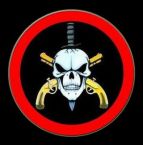DirtyFred
Posts: 99
Joined: 5/22/2014
Status: offline

|
worth reading
enjoy
Quote:
On 1 October 1982, after four years as chief of division at the Swedish
Defence Staff, I entered my new position as Chief of Stockholm
Coastal Defence. I took over responsibility for an ongoing wartime
forces exercise with 4,000 men in the archipelago, including Special
Forces, patrol vessels, mine troops and artillery forces. My first
meeting with my new staff was interrupted by a report of a submarine
periscope deep inside the archipelago at Muskö naval base. I cancelled
the meeting and contacted the regional commander. An intensive
anti-submarine operation began, which went on for two weeks.
This incident influenced Swedish coastal defence activities for the rest
of the 1980s.
We had been anticipating Soviet submarines in connection with an
impressive US naval visit to Stockholm in the last days of September
1982. On earlier occasions, Soviet or Warsaw Pact submarines had followed
our Western visitors below the surface, also in our territory. We
believed the Coastal Defence exercise and our presence in the archipelago
would give us an advantage in our battle with intruding submarines.
After a few days of submarine hunting, we were authorized to use
our heavy mines against the intruder as long as no civilians were in
danger. We detonated mines on 7 and 11 October, in both cases just
after clear indications of a passing submarine. The order was not to
sink but to stop (or damage) the submarine and force it to the surface.
After the 11 October detonation, we received indications of repair
works on a damaged submarine. Two days later, we had indications of
a submarine once again approaching the mine barrage, but despite full
control of the surface, the Commander-in-Chief ordered a ceasefire.
Two hours after the submarine had passed the mine barrage we were
once again authorized to use force.
As Chief of Stockholm Coastal Defence, I mobilized considerable
resources in an attempt to force a submarine to the surface. My task
was to rebuff any intruder within my area of responsibility; the nation
ality of the intruding submarines was not my concern. However, like
the Submarine Defence Commission, I was convinced that the submarines
originated from the Warsaw Pact. Ola Tunander’s research
has provided a new basis for settling the question of the intruder’s
nationality. This is particularly evident for the above incident at the
mine barrages in October 1982. Tunander presents a credible account
for the course of events: a Western submarine was released during a
five-hour ceasefire. Tunander’s research, presented in this book, is
groundbreaking and should lead to a re-evaluation of the conclusions
from earlier analyses.
Brigadier-General Lars Hansson
Former Chief of Stockholm Coastal Defence
June 2003
password is my handle
 Attachment (1) Attachment (1)
_____________________________
One equal temper of heroic hearts,
Made weak by time and fate, but strong in will
To strive, to seek, to find, and not to yield.
|
 Printable Version
Printable Version














 New Messages
New Messages No New Messages
No New Messages Hot Topic w/ New Messages
Hot Topic w/ New Messages Hot Topic w/o New Messages
Hot Topic w/o New Messages Locked w/ New Messages
Locked w/ New Messages Locked w/o New Messages
Locked w/o New Messages Post New Thread
Post New Thread